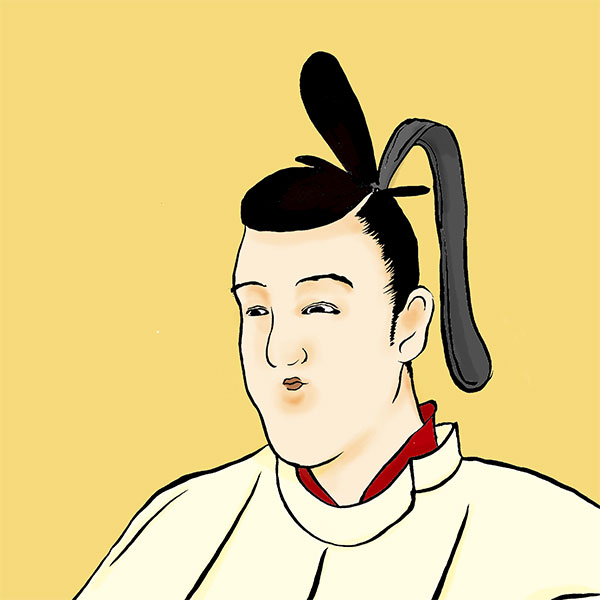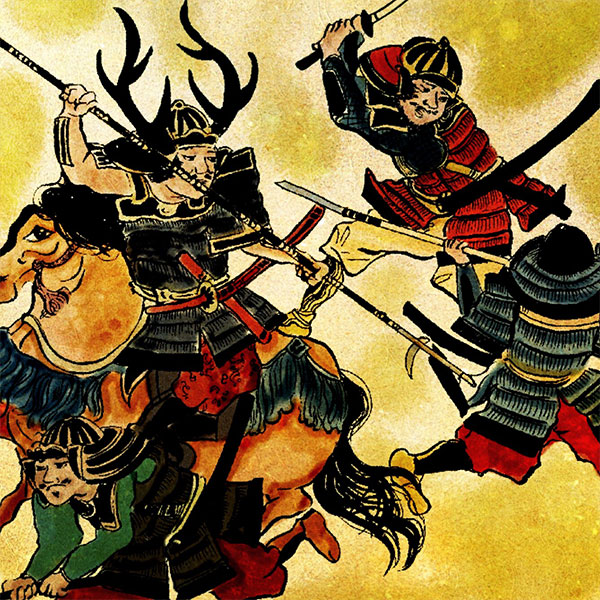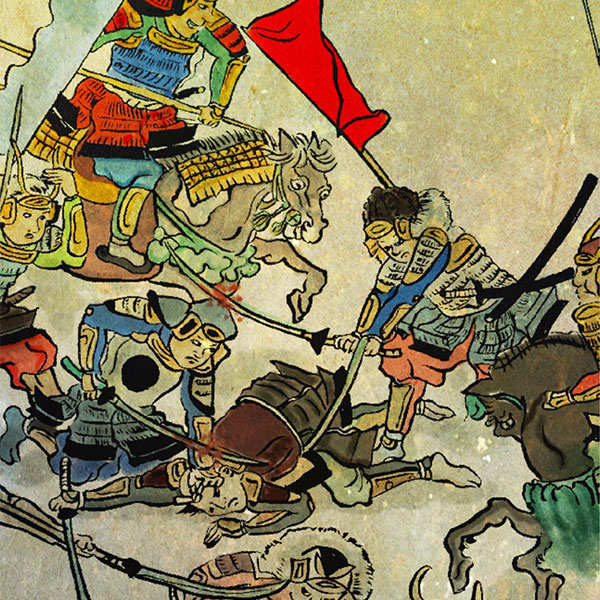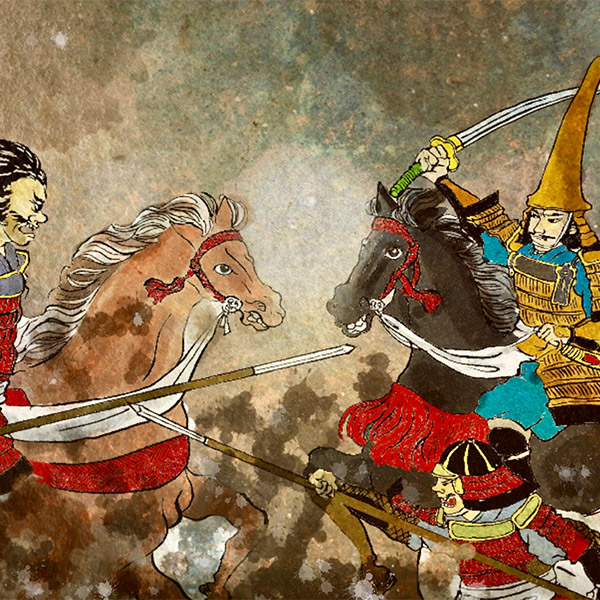Toyotomi Hideyori (1/2)The second generation was at the mercy of the times.

Toyotomi Hideyori
- Article category
- biography
- name
- Toyotomi Hideyori (1593-1615)
- place of birth
- Osaka Prefecture
- Related castles, temples and shrines

Osaka Castle

Fushimi Momoyama Castle

Nijo Castle
As the Sengoku period progressed to the Edo period, there were many military commanders who couldn't help but think, ``What if they had been born at a different time or place?'' Toyotomi Hideyori is one of them. The term ``lack of luck'' may apply to the fate of his son, Toyotomi Hideyori, who was born near the end of his father, Toyotomi Hideyoshi's life, and was appointed to take over as head of the family at just six years old. Introducing Toyotomi Hideyoshi, who lived his life to the fullest and died when Osaka Castle fell.
Birth and death of father Toyotomi Hideyoshi
Toyotomi Hideyori was born in Osaka Castle in 1593 as the son of his father, Toyotomi Hideyoshi, and his concubine, Yodo (the eldest daughter of Azai Nagamasa and Oichinokata). It is said that at that time, it was a custom to pray for the healthy growth of children, so it was discarded and then picked up by Shigemasa Matsuura, a vassal. His childhood name was Hiroimaru. Born when Hideyoshi was 57 years old, Kunimatsu, who had been born before him, had passed away prematurely, so he was cherished as the long-awaited successor.
One theory is that Toyotomi Hideyoshi had many legal wives and concubines but had few children, so there was a rumor that she was not Hideyoshi's child, but we do not know how true it is.
By the time Hideyori was born, his cousin Hidetsugu Toyotomi had already been given the post of Kanpaku as Hideyoshi's adopted heir and became Hideyoshi's successor. This was done because it was difficult to find an heir. His father, Hideyoshi, initially attempted to fine-tune the relationship between Hideyori and Hideyori by having Hideyori and Hidetsugu's daughters engaged in October, two months after Hideyori's birth, in an attempt to create a succession of power from Hideyoshi to Hidetsugu to Hideyori. was doing.
However, in July 1595, Hideyoshi stripped Hidetsugu of his position as Kanpaku and then had him commit suicide on Mt. Koya. At the same time, he killed almost all of Hidetsugu's children and wives, making his position as Hideyori's heir vulnerable.
At this time, Hideyoshi created a petition pledging allegiance to Hideyori and had many feudal lords sign the petition. When Fushimi (Momoyama) Castle was built and Hideyoshi moved his residence there, Hideyori moved in with him.
In May 1596, Hideyori went to Kyoto for the first time and introduced himself as Toyotomi Tokichiro Hideyori. Hideyoshi created a system to support Hideyori by introducing basic laws such as additions to the rules and regulations, as well as positions such as the Five Elders and the Five Magistrates.
However, in August 1598, his father Hideyoshi passed away. Hideyori took over as head of the family at the age of only 6 years old and moved to Osaka Castle under Hideyoshi's will.
After Hideyoshi's death, Tokugawa Ieyasu, the head of the Five Elders, ignored the principle of a collegial system and gradually strengthened his influence, deepening conflicts within the government. Maeda Toshiie, also one of the Five Great Elders who was in the only position to oppose Ieyasu, was entrusted with making contributions to Hideyori, but as he passed away while pursuing Hideyoshi, political leadership was placed in Ieyasu's hands. I started to get caught.
Battle of Sekigahara
In the 5th year of Keicho (1600), Ishida Mitsunari and others who were the five magistrates raised an army against Tokugawa Ieyasu, and the Battle of Sekigahara broke out. Terumoto Mori, one of the Five Elders, was appointed as the supreme general of the Western Army. Hideyori was placed under Terumoto's protection. At Sekigahara, both the Western and Eastern armies advocated fighting ``for Hideyori,'' and in fact, after the Battle of Sekigahara, Hideyori treated Ieyasu as a loyal man. However, the reality was a power struggle within the Toyotomi government.
Ieyasu skillfully used his position as the head of the Five Elders. During the post-war settlement of the Battle of Sekigahara, the Toyotomi family's territories (so-called Taikozoiri) were arbitrarily distributed, and out of the approximately 2.2 million koku that had been distributed throughout Japan, the management was left to various feudal lords. He goes on a rampage to steal the money.
As a result, Hideyori fell to the position of a feudal lord with a wealth of approximately 650,000 koku, controlling only the areas under his direct control of Settsu, Kawachi, and Izumi.
Furthermore, in February 1603, Ieyasu obtained the official position of Seii Taishogun, which symbolized the position of the most powerful person. He mobilized various feudal lords to build Edo Castle and established the Edo Shogunate.
Hideyori was gradually removed from the position of heir to the nation. However, at this point, the Toyotomi family still maintained a certain degree of influence, including financial power.
In July of the same year, Hideyori married Senhime (whose mother was Oe, Yodo-dono's younger sister), the daughter of Hidetada Tokugawa, the second shogun of the Edo shogunate, to whom he had been engaged at the arrangement of Hideyoshi before his death. It was a political marriage between cousins.
Hideyori's growth and changes in Tokugawa Ieyasu's response
The Toyotomi family was considered a Sekkan family, and Toyotomi Hideyori steadily rose through the ranks and government positions. In fact, at the beginning of the year, Kyoto court nobles descended en masse on Osaka Castle to pay homage to Hideyori, and they also exercised their own right to confer official positions on their vassals, receiving the same treatment from the Imperial Court as Hideyoshi received during his lifetime. .
Even in the samurai world, Hideyori was listed on documents as being the direct advisor of the Tokugawa shogunate, and Hideyori still had a certain level of equality with the Tokugawa family.
In April 1605, when Hideyori was promoted to Minister of the Right, Tokugawa Ieyasu requested a meeting with Hideyori in Kyoto and Kyoto. It is said that Hideyori had the intention of meeting with him, but in the end it did not happen due to the opposition of his mother, Yodo-kun. In response, Ieyasu dispatched his sixth son, Tadateru Matsudaira, to Osaka Castle. Tadateru Matsudaira is meeting with Hideyori.
In March 1611, due to Ieyasu's intervention, Emperor Goyozei abdicated and Emperor Gomizunoo ascended the throne. Under the pretext of ``greeting Senhime's grandfather,'' Hideyori went to Kyoto, protected by Kiyomasa Kato and Yukinaga Asano, and met with Ieyasu at Nijo Castle in Kyoto.
Hokoji Temple Bell Mei Incident and the Tokugawa Shogunate’s Response
In 1614, the Great Buddha Hall of Hokoji Temple in Kyoto, which was being rebuilt by the Toyotomi family, was almost completed.

- WriterTomoyo Hazuki(Writer)I have loved history and geography since my student days, and have enjoyed visiting historical sites, temples and shrines, and researching ancient documents. He is especially strong in medieval Japanese history and European history in world history, and has read a wide range of things, including primary sources and historical entertainment novels. There are so many favorite military commanders and castles that I can't name them, but I especially like Hisashi Matsunaga and Mitsuhide Akechi, and when it comes to castles, I like Hikone Castle and Fushimi Castle. Once you start talking about the lives of warlords and the history of castles, there's a side of you that can't stop talking about them.









